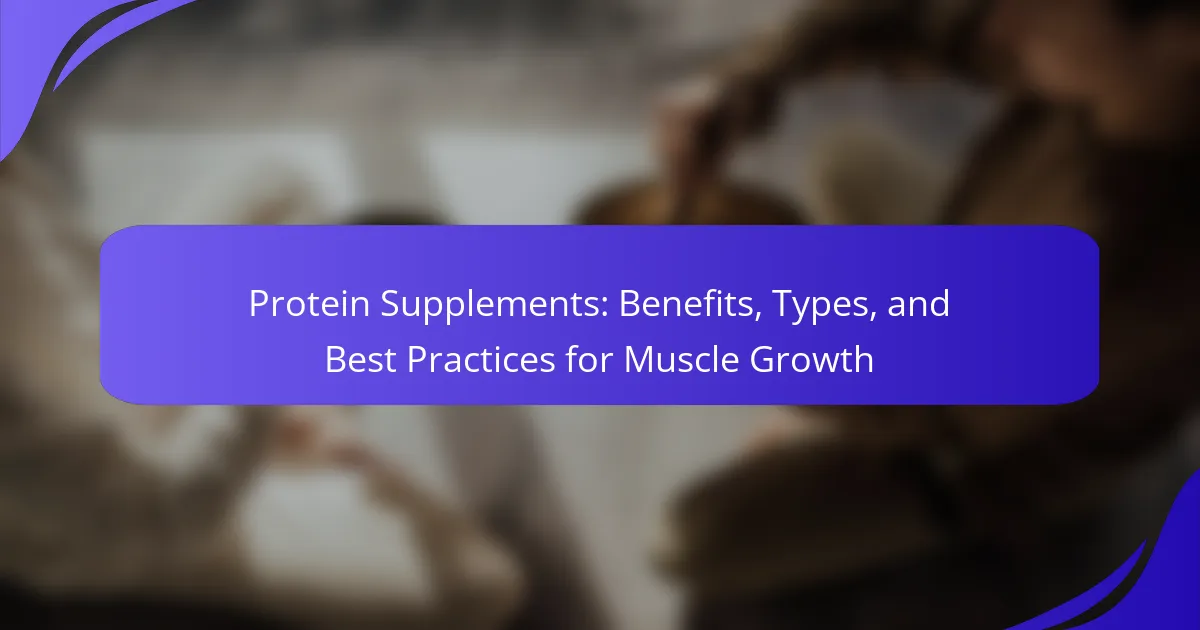High-Intensity Interval Training (HIIT) maximises calorie burn and improves fitness in a short time. This article explores the benefits of HIIT, effective routines for beginners, and unique attributes that enhance performance. Discover how this adaptable workout strategy can fit into your busy lifestyle while delivering significant results.

What is High-Intensity Interval Training?
High-Intensity Interval Training (HIIT) is a workout strategy that alternates short bursts of intense exercise with recovery periods. This method enhances cardiovascular fitness, boosts metabolism, and promotes fat loss. Studies show HIIT can improve aerobic and anaerobic capacity significantly in less time than traditional workouts. Effective HIIT routines often include exercises like sprinting, cycling, or bodyweight movements performed at maximum effort for 20-30 seconds, followed by equal or longer rest periods. This approach maximises calorie burn and improves endurance efficiently.
How does HIIT differ from traditional workouts?
High-Intensity Interval Training (HIIT) differs from traditional workouts by emphasising short bursts of intense exercise followed by rest or low-intensity periods. This approach leads to improved cardiovascular fitness and greater calorie burn in less time compared to steady-state workouts. HIIT can boost metabolic rate significantly post-exercise, a benefit less pronounced in traditional routines. Additionally, HIIT workouts can be more time-efficient, often lasting 20-30 minutes, while traditional workouts may require longer durations to achieve similar benefits.
What are the physiological principles behind HIIT?
High-Intensity Interval Training (HIIT) operates on principles of anaerobic and aerobic energy systems. It alternates between short bursts of intense activity and recovery periods, maximising cardiovascular efficiency and metabolic rate. This training stimulates muscle adaptation, improving strength and endurance. HIIT also enhances post-exercise oxygen consumption, leading to greater calorie burn.

What are the universal benefits of High-Intensity Interval Training?
High-Intensity Interval Training (HIIT) offers numerous universal benefits, including enhanced cardiovascular fitness, increased metabolic rate, and improved insulin sensitivity. These benefits contribute to effective weight management and fat loss. HIIT workouts typically require shorter time commitments while delivering significant results, making them efficient for busy individuals. Studies indicate that HIIT can improve aerobic and anaerobic performance, leading to better overall fitness levels.
How does HIIT improve cardiovascular health?
High-Intensity Interval Training (HIIT) significantly enhances cardiovascular health by improving heart efficiency and increasing aerobic capacity. This training method involves short bursts of intense exercise followed by rest, which boosts heart rate variability and lowers blood pressure. Studies show that HIIT can reduce the risk of heart disease by improving lipid profiles, enhancing insulin sensitivity, and promoting weight loss. As a result, individuals engaging in HIIT experience better overall cardiovascular function compared to those who perform moderate-intensity exercise.
What role does HIIT play in weight loss?
High-Intensity Interval Training (HIIT) significantly enhances weight loss by maximising calorie burn in short durations. HIIT boosts metabolism, leading to increased fat oxidation post-exercise. Studies show participants can burn 25-30% more calories compared to traditional steady-state cardio in the same timeframe. This efficiency makes HIIT a unique attribute in weight loss strategies. Additionally, HIIT can be tailored to various fitness levels, ensuring accessibility and effectiveness for a broader audience.
How can HIIT enhance metabolic rate?
High-Intensity Interval Training (HIIT) can significantly enhance metabolic rate by increasing calorie burn during and after workouts. HIIT stimulates excess post-exercise oxygen consumption (EPOC), leading to a higher metabolic rate for hours post-exercise. This effect can result in increased fat oxidation and improved overall energy expenditure. Studies show that HIIT can elevate metabolic rate by up to 15% compared to steady-state cardio, making it an efficient workout choice for weight management.

What unique attributes set HIIT apart from other training methods?
High-Intensity Interval Training (HIIT) is distinguished by its unique attributes, including short bursts of intense effort followed by brief recovery periods. This structure maximises calorie burn and improves cardiovascular fitness in less time compared to traditional methods. HIIT also enhances metabolic rate post-workout, contributing to additional calorie expenditure. The versatility of HIIT allows for a wide range of exercises, making it adaptable for various fitness levels and preferences.
What are the specific time efficiency benefits of HIIT?
High-Intensity Interval Training (HIIT) offers significant time efficiency benefits. It allows individuals to achieve effective workouts in shorter durations compared to traditional training methods.
HIIT workouts typically last between 15 to 30 minutes while providing similar or superior cardiovascular and metabolic benefits. This efficiency makes it easier for busy individuals to incorporate exercise into their daily routines.
Additionally, HIIT promotes afterburn effects, known as excess post-exercise oxygen consumption (EPOC), which can enhance calorie burning for hours post-workout.
As a result, HIIT maximises workout effectiveness within constrained time frames, making it an ideal choice for those seeking efficient fitness solutions.
How does HIIT promote muscle retention during weight loss?
High-Intensity Interval Training (HIIT) promotes muscle retention during weight loss by maintaining higher levels of muscle protein synthesis. This training method combines short bursts of intense activity with rest periods, which helps preserve lean muscle mass while burning fat. Studies indicate that HIIT can stimulate the release of growth hormones, enhancing muscle retention. Additionally, it improves metabolic rate, allowing for continued calorie burn post-exercise, further supporting muscle preservation during weight loss.

What rare attributes can be found in specific HIIT programs?
Certain HIIT programs feature rare attributes that enhance their effectiveness. These attributes may include specialised training techniques, unique recovery protocols, or tailored intensity levels. For example, some programs incorporate unconventional movements or equipment, such as battle ropes or plyometric drills, which can lead to distinct fitness outcomes. Additionally, rare attributes might involve specific nutritional guidance or psychological strategies to improve performance and motivation. These elements contribute to a program’s uniqueness and can significantly impact results.
What unique equipment is used in advanced HIIT routines?
Advanced HIIT routines often utilise unique equipment designed to enhance intensity and efficiency. Key examples include battle ropes, which improve strength and endurance; kettlebells, which offer versatility in weight training; and plyometric boxes, which facilitate explosive movements. Other notable equipment includes suspension trainers for bodyweight exercises and resistance bands to increase difficulty. Each of these tools targets specific muscle groups and elevates the overall workout experience.
How do cultural variations influence HIIT styles?
Cultural variations significantly influence HIIT styles by shaping workout preferences, intensity levels, and community engagement. For instance, cultures that prioritise collectivism may favour group HIIT sessions, enhancing motivation and enjoyment. In contrast, individualistic cultures may lean towards personalised routines, focusing on self-competition. Additionally, regional fitness trends, such as dance-based HIIT in Latin America or martial arts-inspired HIIT in Asia, reflect local values and traditions. These cultural factors lead to unique adaptations of HIIT, ensuring that training remains relevant and effective across different populations.

What are effective HIIT routines for beginners?
Effective HIIT routines for beginners include short bursts of intense exercise followed by rest or low-intensity periods. These routines enhance cardiovascular fitness and can be tailored to individual fitness levels.
1. 20-30 seconds of sprinting followed by 1 minute of walking (repeat for 15-20 minutes).
2. 30 seconds of bodyweight squats followed by 30 seconds of rest (repeat for 10 rounds).
3. 20 seconds of jumping jacks followed by 10 seconds of rest (repeat for 8 rounds).
4. 30 seconds of push-ups followed by 30 seconds of rest (repeat for 5 rounds).
5. 1 minute of high knees followed by 1 minute of walking (repeat for 10-15 minutes).
These routines provide a balanced approach, promoting strength and endurance while being manageable for beginners.
What basic exercises should be included in a beginner’s HIIT session?
A beginner’s HIIT session should include basic exercises like burpees, jumping jacks, high knees, mountain climbers, and bodyweight squats. These exercises enhance cardiovascular fitness and build strength effectively. Each exercise can be performed in short bursts followed by rest intervals to maximise intensity and results.
How can beginners structure their HIIT workouts?
Beginners can structure their HIIT workouts by following a simple approach. Start with a warm-up, then alternate between high-intensity exercises and rest intervals. A balanced routine might include 20 seconds of intense activity followed by 40 seconds of rest, repeated for 15-30 minutes. Incorporate a variety of exercises like burpees, sprints, and jump squats to engage different muscle groups. Finally, cool down with stretching to aid recovery.

What are the best practices for maximising HIIT effectiveness?
To maximise HIIT effectiveness, focus on intensity, rest intervals, and variety. Incorporate short bursts of maximum effort followed by brief recovery periods. Aim for a work-to-rest ratio of 1:2 or 1:1. Include different exercises to prevent adaptation and enhance overall fitness. Consistency is key; aim for 2-3 sessions per week for optimal results.
What common mistakes should be avoided during HIIT?
To maximise the effectiveness of High-Intensity Interval Training (HIIT), avoid these common mistakes.
1. Skipping warm-up and cool-down: Failing to prepare your body can lead to injuries.
2. Poor form: Incorrect technique diminishes results and increases injury risk.
3. Inadequate recovery: Insufficient rest between intervals can hinder performance.
4. Ignoring hydration: Dehydration affects energy levels and overall workout quality.
5. Overtraining: Excessive frequency without rest can lead to burnout and injuries.
How can nutrition optimise HIIT results?
Proper nutrition enhances HIIT results by providing essential energy and recovery support. A balanced intake of macronutrients, particularly carbohydrates and proteins, fuels high-intensity workouts and aids muscle repair. Consuming complex carbohydrates before workouts ensures sustained energy, while protein intake post-exercise promotes muscle synthesis. Hydration is also crucial, as it maintains performance and recovery. Overall, strategic nutrition optimises energy levels, enhances performance, and accelerates recovery, maximising the benefits of HIIT training.
What recovery strategies enhance performance post-HIIT?
Effective recovery strategies post-HIIT include hydration, nutrition, active recovery, and sleep. Hydration replenishes fluids lost during intense workouts, while proper nutrition aids in muscle repair and energy restoration. Active recovery, such as light aerobic exercise, promotes blood flow and reduces soreness. Prioritising quality sleep enhances overall recovery and performance.



